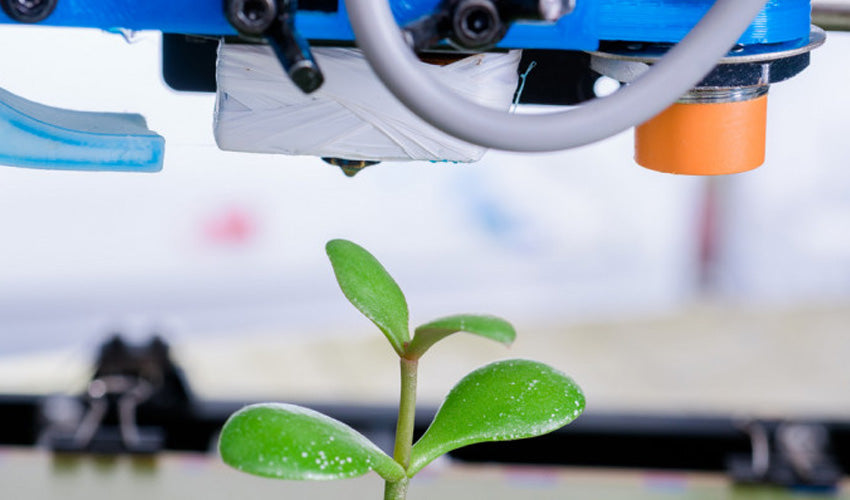7 Ways 3D Printing Promotes Environmental Sustainability
In the pursuit of a more sustainable and eco-friendly future, 3D printing emerges as a transformative force, offering innovative solutions to reduce our environmental impact. This article explores seven key ways in which 3D printing contributes to a greener world, from making parts locally to eliminating excess inventory.
- Localized Production: Making Parts Closer to Home
One significant advantage of 3D printing is its ability to facilitate localized production. Traditional manufacturing often involves long and complex supply chains, leading to increased transportation and carbon emissions. With 3D printing, however, parts can be produced locally, reducing the need for extensive transportation networks.
By making parts closer to home, we not only minimize the environmental impact associated with transportation but also support local economies. This shift towards localized production aligns with the principles of sustainability, fostering a more resilient and environmentally friendly manufacturing ecosystem.
- Downsizing Factories: Smaller and Quieter Operations
The conventional image of large, noisy factories may soon become a relic of the past, thanks to the advent of 3D printing technology. Unlike traditional manufacturing methods that require expansive facilities, 3D printing allows for smaller, more compact operations.
Smaller and quieter 3D printing facilities contribute to a reduction in energy consumption and operational noise. This shift towards downsizing aligns with the broader goal of creating eco-friendly manufacturing environments that are both efficient and environmentally responsible.
- Reparability and Spare Parts: A Boost to Sustainability
One of the notable benefits of 3D printing is its role in enhancing reparability. Instead of discarding broken or malfunctioning items, 3D printing enables the production of spare parts, extending the lifespan of products. This approach significantly reduces the need for constant replacement and contributes to a more sustainable, circular economy.
Empowering individuals and industries to repair and maintain their possessions through 3D printing not only reduces waste but also promotes a shift towards a more responsible and eco-conscious consumer culture.
- Efficient Design: Reducing Material Waste
3D printing introduces a paradigm shift in design principles, focusing on efficiency and material conservation. Unlike traditional manufacturing methods that involve subtractive processes, 3D printing builds objects layer by layer, utilizing only the necessary material.
This efficiency in design not only reduces material waste but also allows for the creation of intricate and lightweight structures. The result is a more resource-conscious approach to manufacturing that aligns with the principles of environmental sustainability.
- Streamlined Manufacturing: Enhancing Operational Efficiency
The streamlined nature of 3D printing processes contributes to enhanced operational efficiency. Traditional manufacturing often involves multiple steps, each requiring specific tools and machinery. In contrast, 3D printing consolidates the production process into a single step, minimizing energy consumption and production time.
This streamlined approach reduces the overall environmental impact associated with manufacturing, making 3D printing a key player in the quest for greener and more sustainable production methods.
- Reduced Raw Material Consumption: Doing More with Less
In the world of 3D printing, less is indeed more. Traditional manufacturing methods often require substantial amounts of raw materials to account for potential waste during the production process. 3D printing, on the other hand, operates with precision, utilizing only the required amount of material to create the desired object.
This reduction in raw material consumption not only minimizes environmental strain but also contributes to cost savings. 3D printing allows industries to do more with less, promoting a more sustainable and resource-efficient approach to manufacturing.
- Inventory Elimination: On-Demand Production
Traditional manufacturing often involves the creation and maintenance of extensive inventories to meet fluctuating demand. This practice not only ties up valuable resources but also leads to increased waste if products become obsolete or unsold.
3D printing introduces the concept of on-demand production, eliminating the need for large inventories. Items can be produced as needed, reducing waste and aligning with the principles of a lean and sustainable manufacturing model.
In Conclusion: 3D Printing as an Environmental Ally
As we navigate the challenges of environmental sustainability, 3D printing emerges as a powerful ally in the quest for greener manufacturing practices. From localized production and downsized facilities to enhanced reparability and streamlined manufacturing, the benefits of 3D printing extend across various facets of the production process.
By embracing 3D printing technology, we embark on a journey towards a more sustainable and eco-friendly future. As we continue to explore innovative solutions, the transformative potential of 3D printing becomes increasingly clear — a beacon guiding us towards a greener, more environmentally conscious world.

